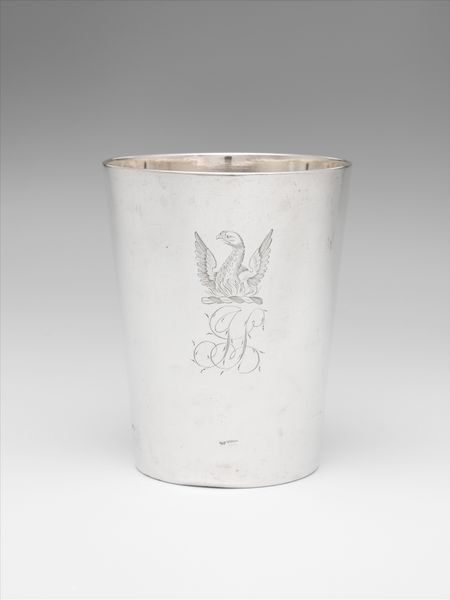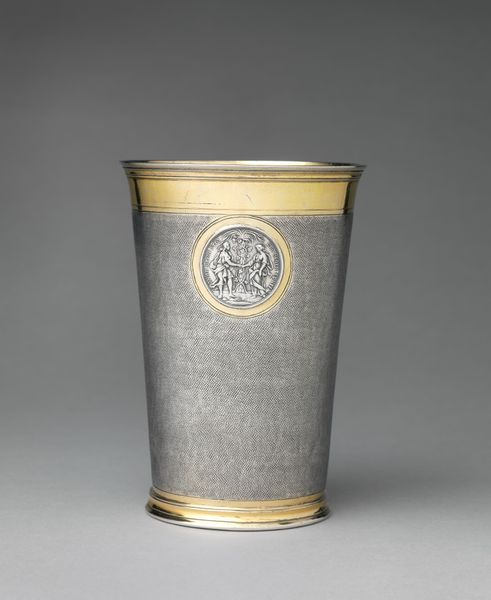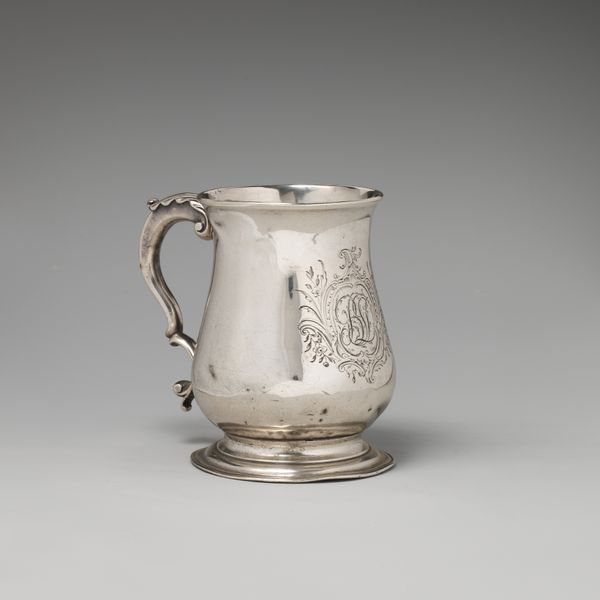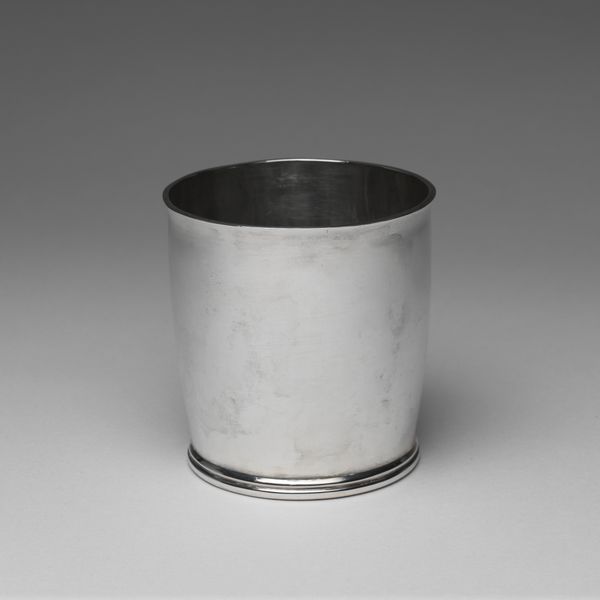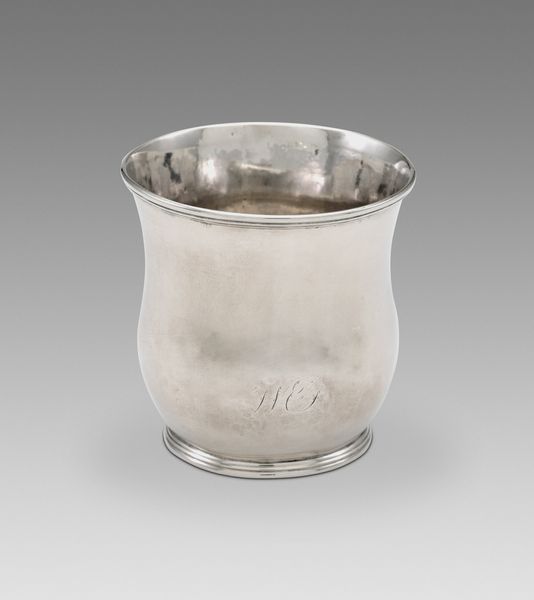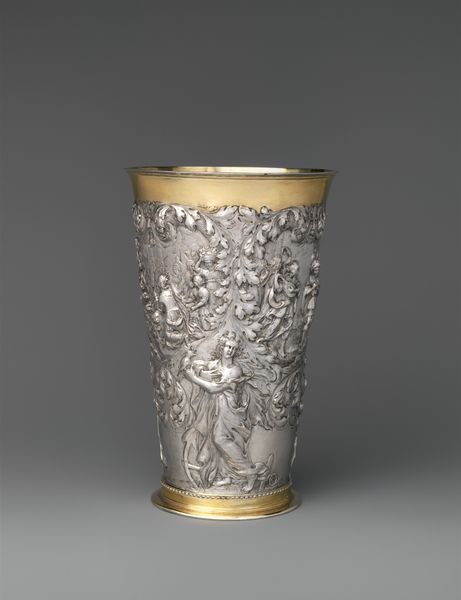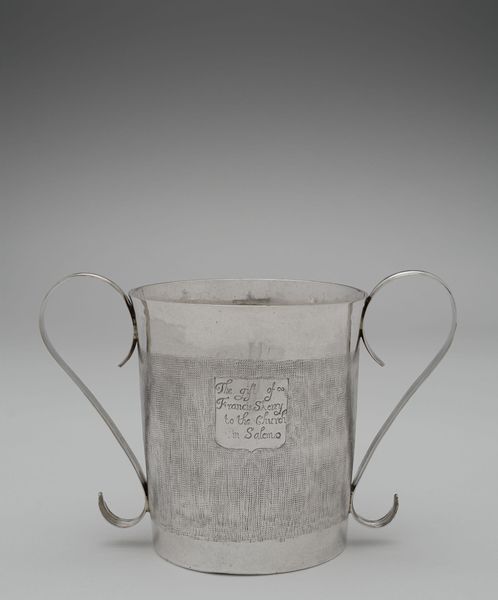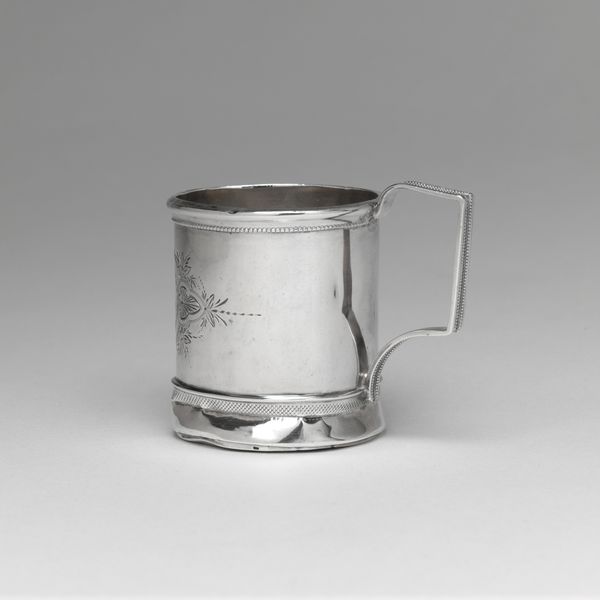
silver
silver
decorative-art
Dimensions: H. 4 in. (10.2 cm) 5 oz. 4 dwt (161.2g) Lip diameter: 3 1/8 in. (7.9 cm) Diam. of base: 2 3/8 in. (6 cm)
Copyright: Public Domain
Curator: Here we have a silver beaker, crafted between 1802 and 1808 by Benjamin Halsted. It's part of the collection at the Metropolitan Museum of Art. What strikes you about it? Editor: The immediate impression is its sheer simplicity. It’s a polished, cylindrical form in reflective silver with delicate engraving of an eagle and entwined script. A practical object made precious. Curator: Absolutely. Silver, as a material, gained increasing cultural significance, and we see silversmiths like Halsted contributing to the formation of a distinct American identity through decorative arts. The eagle is prominently featured above a monogram; these elements communicate not just wealth but aspiration, national pride, and a link to classicism, don't you think? Editor: Precisely. Consider the labor involved in its creation. Mining the silver, the silversmithing itself. Each stage, involving different trades and skills. Who controlled the resources, the conditions of production? The final beaker speaks of a complex web of social relations, from extraction to its eventual place in the home. Curator: And it’s also about public consumption, I mean its a celebration of American virtues promoted by national institutions! A display of gentility and aspiration facilitated by access to goods within a developing American market. Silverware, in particular, allowed families to present themselves within these social norms. Editor: It's also remarkable to consider what everyday objects like these might have witnessed: domestic rituals, changing hands across generations. These items were often melted and reformed; I am struck by what it says about the enduring role of material culture! Curator: Very true! Thinking about this simple Beaker is such a valuable window to analyze early 19th century American society through art and objecthood. Editor: I concur; its unadorned character highlights how labor, social narratives, and function intersect. Food for thought, indeed!
Comments
No comments
Be the first to comment and join the conversation on the ultimate creative platform.
